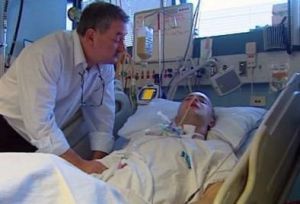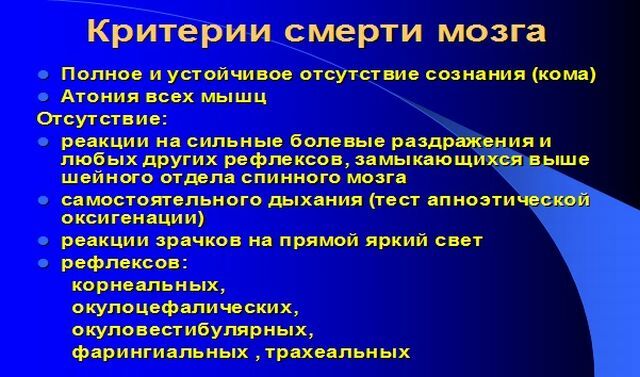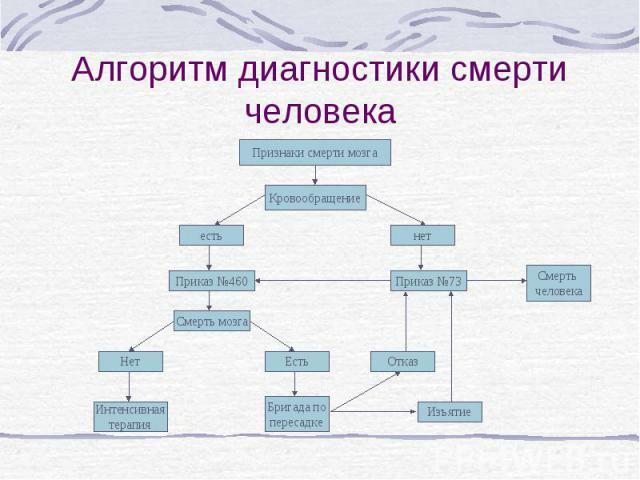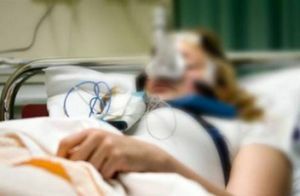 The concept of brain death, as a rule, is inseparably associated with the death of the whole organism as a whole. The reason for this is clear: the central nervous system, and primarily the brain, regulates all the basic processes of life in the human body, and without it, they seemingly impossible. However, in rare cases, this rule has some exceptions.
The concept of brain death, as a rule, is inseparably associated with the death of the whole organism as a whole. The reason for this is clear: the central nervous system, and primarily the brain, regulates all the basic processes of life in the human body, and without it, they seemingly impossible. However, in rare cases, this rule has some exceptions.
The fact that the brain is the organ that first dies when exposed to a number of extreme factors, and especially hypoxia.
It is known that after stopping breathing, brain cells retain their life in about 5-7 minutes. And in some cases it happens that against the background of ongoing resuscitation measures it is possible to restore to life other important organs, but the brain has already died. Having lost regulation from the side of the brain, other organs can continue to function with external support. It is this condition that is called in medicine by the life-time death of the brain.
If we talk about the reasons that can lead to the development of this condition, then it is actually the same diseases that can cause severe coma. Among them, hemorrhagic and ischemic strokes, severe intoxication and poisoning, brain tumors, especially dangerous infections, severe craniocerebral trauma, diabetes mellitus and some other conditions can be distinguished.
Characteristic symptomatic criteria
The symptomatology characteristic of the state of the respiratory brain is in many respects similar to the clinical picture of a very deep coma, differing from it by its complete irreversibility.
Because of this, this state is sometimes also called "transcendental coma".There is a complete loss of CNS functions( consciousness, speech,  reaction to external stimuli) while maintaining cardiac activity. Arterial pressure is maintained or maintained medically.
reaction to external stimuli) while maintaining cardiac activity. Arterial pressure is maintained or maintained medically.
The breathing function is provided by the artificial ventilation of the lungs. Characteristic of the complete loss of tonus of skeletal muscles, total areflexia, hypothermia, incontinence of urine and feces. Very typical is the symptom of doll eyes: when you turn your head in any direction( up, down, in the sides), your eyes involuntarily shift in the opposite direction.
Diagnostic criteria for
All of the above symptoms, although characteristic of brain death, are not sufficient to make this diagnosis, as they are sometimes noted in a deep coma. To uniquely diagnose the total death of neurons of the brain, there are several diagnostic criteria that can be divided into hardware and clinical( provocative).
Among the hardware indicators should be primarily two:
- complete absence of bioelectric activity of the brain( both spontaneous and caused by external stimuli) on the electroencephalogram;
- absence of blood flow in cerebral vessels during angiographic examination.
Provocative tests and criteria to identify a condition such as brain death, several:
- A sample with atropine .Intravenously injected 1 ml of a 1% solution of atropine sulfate. If the heart rate does not increase, or, on the contrary, slows down, this confirms the death of the brain.
- Assay with bemegrid .Intravenously injected 1 ml of 0.5% solution of bemegrid. With an exorbitant coma, there will be no increase in the frequency of respiratory movements, which is also a confirming factor.
- Cold( vestibular) assay .5-10 ml of ice water is injected into the external ear canal with a syringe. In the presence of brain death, this does not lead to the appearance of nystagmus, and also does not cause any changes in the facial expression of the patient.
- There is another version of provocative cold sample .Pouring 60-100 ml of ice water into the left or right ear of the patient with a large syringe, it is washed with an external auditory canal. Turning the eyeballs in the direction of washing allows you to exclude the state of brain death.

The medical report on intrapartum brain death in most countries is compiled with the participation of the resuscitator, neurologist, forensic expert and the representative of the management of the medical institution. In some countries where well-established institutions of advocacy work, the presence of a patient's lawyer is also mandatory.
Differential diagnosis of
Intravital brain death should be differentiated primarily from severe coma. The state of deep coma, although accompanied by hypoxia of organs and tissues, however, due to compensatory mechanisms, in the absence of complete stopping of breathing, lasts for a long time without the death of the brain. The diagnostic criteria by which it can be distinguished from the death of the brain have been given above.
Also it is necessary to distinguish between brain death and a chronic vegetative state, in which the brain cortex and some associated zones die completely or partially, but the diencephalic region and stem structures continue to function.
Due to this, in the chronic vegetative state, the phenomenon of loss of mental functions is noted with the preservation of vegetative: the patient wakes up cyclically and falls asleep, his breathing and cardiovascular system continue to function, but there are no cognitive abilities, understanding, speech, perception through sensory organs. If the vegetative state is inherently decorticated, then the death of the brain is a complete decerebriation.

Preventing the development of a lifelong supernumerary coma
Since this condition occurs again against other pathologies and diseases, the measures for its prevention are mainly reduced to timely diagnosis and adequate treatment of causative disorders.
It is important for a patient to follow the recommendations of a doctor, to undergo the necessary examinations on time, not to violate the rules of taking prescribed medications.
In some cases, when there are serious reasons to fear the development of life-threatening conditions, it will be appropriate for the attending physician to pay attention to drugs activating the brain activity( for example, nootropic drugs).
Of course, this does not eliminate such a threat, but it can somewhat reduce it, or increase the time during which the patient can be helped.
Moral, legal and other aspects of
Undoubtedly, the condition of intravital death of the brain is closely related to a number of moral, ethical, legal, religious and other aspects.
The main reasons for this are two:
- Often after the death of the brain, the vital activity of other organs can be sustained for a long time( sometimes months and years).However, on the other hand, such a thing seems pointless, since a person as a person has died. Consequently, sooner or later, inevitably raises the question of disconnecting from parenteral nutrition, artificial ventilation systems of lungs, etc.
- Human organs after death of the brain can be used to transplant to other people .The medical laws of most countries recognize the death of the brain as equivalent to the biological death of a person. In particular, the Ministry of Health of Russia approved this instruction by order number 100/30 of 02.04.01.The right to consent to the use of organs for transplantation is usually given to close relatives. As for the attitude of representatives of different religions to this issue, there is no consensus, but the opinion that equates brain death to human death is also predominant.

Prospects for the treatment of
The current stage of development of medicine does not represent any possibilities for curing a patient after brain death. In some cases, it is possible to exit from conditions similar to brain death, for example, from a deep coma, or from a vegetative state( in the case of incomplete decortication).
 As for the direct death of the brain, the terminology itself implies the irreversibility of this condition, so until recently there was no research on the possibilities of therapy at all.
As for the direct death of the brain, the terminology itself implies the irreversibility of this condition, so until recently there was no research on the possibilities of therapy at all.
Purely hypothetical for modern medicine remains and the possibility of a brain transplant - among other problems, it is almost impossible to imagine the availability of a donor organ for such an operation.
Only in 2016, studies in the field of curing brain death using modern biomedical technologies began to be carried out by several groups of American scientists, but the success of such works even in the distant future is very doubtful.



